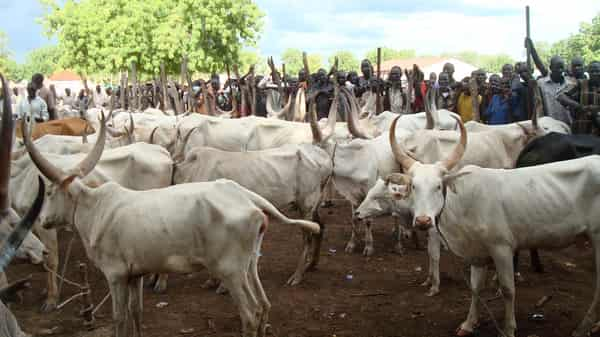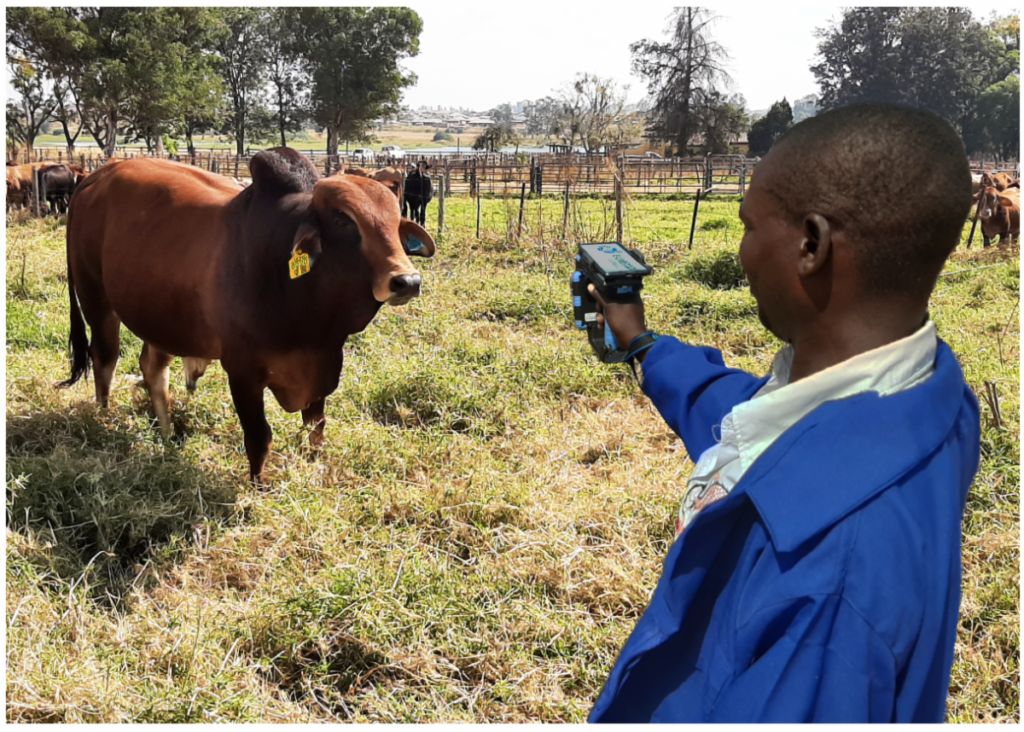
Animal production specialists, livestock farmers and officials in the Federal Ministry of Agriculture have identified obstacles to the proposed National Livestock Transformation Plan (NLTP) initiated in 2019.
The Federal Government, in 2019, inaugurated a 10-year National Livestock Transformation Plan as an alternative to open grazing of cattle so as to prevent deadly conflicts between herders and farmers.
Therefore, rationales for the NLTP include population explosion that would not permit open grazing; the Economic Recovery and Growth Plan (ERGP, 2017-2020),which places agriculture at the centre of the government’s economic diversification strategy; the Agriculture Promotion Policy (APP, 2016-2020) also highlights the role of the livestock sector in agricultural development, and modernising livestock systems for the Sustainable Development Goals (SDGs); small-scale production methods and supply chain inefficiency ensure that only a small fraction of production makes it into industrial value chains; nomadic livestock production in Nigeria is facing major crises and is at a crossroads due to declining availability of pasture and grazing land, overgrazing, and most importantly, the recurrent and fatal conflicts between pastoralists and crop farmers, among others.
According to the plan, strategic priorities for ranch development include securing natural resources – land, water, feed; sustainable models for ranching infrastructure, electricity, fencing; other support services – transport, health, education; stakeholders developing deeper understanding of value chains – from input supply to marketing; encouragement of private sector investments and creating an enabling policy and legislative environment in support of value chains.
Interestingly, the controversial water bill that has been widely rejected by Nigerians following clauses that appropriate water and coastal land resources to the Federal Government is aimed at creating a legislative environment and policy for the purpose.
And ironically, the water bill has done more damage to the NLTP by creating suspicion and misconceptions, and it further makes the policy non-implementable.
The NLTP strategy also identifies five main pillars as priority areas, including conflict resolution; justice and peace; humanitarian relief; human capital development and cross-cutting issues.
According to the policy, “One option could be to establish corridors for migrating cattle, with established points for watering and feeding the cattle to avoid them leaving the corridor, with animal health and breed improvement services provided.
“A second option is for improved feed and water provision in the northern states through infrastructure improvement and fodder trade from the middle belt states. The production and marketing of feed needs to be developed to ensure that cattle can stay near their home-base during the dry season.
“A third option is to improve cattle to market systems, moving the market places for cattle closer to the home-base so they can be sold off and brought to their final destination by truck or railway.”
In phase one, the policy document states, the NLTP would initially support the development of pilot ranches in each of seven pilot states of Adamawa, Benue, Kaduna, Nasarawa, Plateau, Taraba and Zamfara.
More states can also opt-in with private land provisions to help shape the success of the pilot phase. As a model, the development of four categories of ranches is proposed with size models of 30, 60, 150 and 300 cattle respectively, corresponding to small, intermediate, medium and large in each of the pilot grazing ranch.
In addition, the establishment of one breeder ranch with a minimum of 1000 cattle is proposed within a location in each piloting state. And each piloting state will decide whether the cluster will be beef or dairy cattle or a mix, depending on their peculiarities.
The overall responsibility for the co-ordination of the NLTP will be carried out at the federal level by the NEC NLTP Steering Committee through the Programme Coordination Secretariat (PCS) to be domiciled in the Office of the Vice President.
However, the International Crisis Group (ICG) attributes failure of the plan to get off the ground to “inadequate political leadership, delays, funding uncertainties, lack of expertise and COVID-19.”
A report by the group, entitled ‘Ending Nigeria’s herder/farmer crisis: The Livestock Reform Plan,’ states that “Nigeria’s latest plan for curbing herder-farmer conflict is facing obstacles, including staff and funding shortages, as well as political opposition. If this initiative fails, there could be more rural violence. Abuja should work with donors to raise both money and awareness of the scheme’s benefits.”
Recently, Ondo State governor, Rotimi Akeredolu, lent a voice to the demand for an end to open grazing, and called on the Federal Government to assist people in so many fields, saying, “Animal husbandry is another form of farming.”
He added that “Ondo State would do ranching. The National Livestock programme is so important. States that are interested, let them be involved in ranching and the Federal Government should support it.”
Major obstacles to plan implementation
Lack of political willpower on the part of state governments which key into the project, and the Federal Government. Critics said it was a political show off amid widespread rejection of the RUGA, accounting for their inability to showcase a model two years after the inauguration of the livestock plan.
Again, the COVID-19 pandemic and dwindling revenue of the federal and state governments have made the plans a non-priority scheme in the face of other national needs.
Opposition, partly among herders predominantly from the Fulani ethnic group, but also among farmers who resent the plan’s emphasis on pastoralists, hinders it from take-off. Distrust is widespread in Nigeria’s Middle Belt, which had been the scene of violent disputes over land between herders and farmers.
President of the All Farmers’ Association of Nigeria (AFAN), Ibrahim Kabir, said the arrangement was that the Federal Government would contribute 80 per cent and the states 20 per cent.
He believed that delayed funding from the Federal Government is a major factor that has contributed to the delay despite huge losses of lives and properties to clashes between herders and farmers.
In addition, Kabir said: “The sites will have to be analysed including resettlement analysis and all that.
“In the case of Adamawa, Gongoshi grazing reserve data and schematic proposals have been made. Funding for the NLTP is clearly the problem in the implementation exercise.”
He expressed optimism that with the incessant skirmishes being reported from all over, at least work in the four pilot states will commence immediately.
Nasarawa yet to commence NLTP operation
MEANWHILE, Nasarawa State is one of the states that keyed into the Federal Government’s NLTP in 2019. The state coordinator of NLTP, Dr Adullahi Musa, had earlier stated that through NLTP in Nasarawa State, farmers and herders were fully aware of their operational boundaries as far as grazing reserves were concerned.
It could be recalled that the state deputy governor, Dr. Emmanuel Akabe, expressed optimism about the project.
“We are quite enthusiastic about this programme, starting in Nasarawa State. We feel it is a great honour that Nasarawa State was picked to pilot this project,” he said.
“We, as a state, have resolved not only to be in charge but also in control. We want to own it and make Nasarawa an envy of other states, because we are supposed to showcase not only Nasarawa State, but the whole of Nigeria.”
Communities earmarked for the programme are Awe, Keana, Doma, Mankwar, Konva, Gitata, Kurudu and Loko which were initially designated for grazing reserves, have been converted to accommodate the newly introduced NLTP.
The state coordinator of NLTP noted that all the necessary surveys and sensitization of the affected communities have been concluded, awaiting the official take off of NLTP,” he said.
He further disclosed that the state had already provided an office complex for the project, but could not confirm whether the project had commenced as of the time of filing this report.
Government yet to set up ranch in Bauchi
WHILE speaking with The Guardian in Bauchi, two factional leaders of the Miyetti Allah Cattle Breeders Association of Nigeria (MACBAN) said that the government was yet to commence implementation of the NLTP in any part of the state.
One of the leaders, Sadiq Ahmed, said the government should do intensive enlightenment for the herders who are born nomads. He added that “how can a government have a policy on paper but it will be a problem to execute it?
“As far as I know, there is nothing on the ground for the ranching in Bauchi. If such a programme would be done, we have to be informed because it affects us directly.
“Ranching is a programme that is very strange to us, but if we must do it, we must be given proper education on it. Our animals are used to walking, and likewise us. If we must do this, we must also get new breeds of cattle,” Sadiq said.
Also, another factional chairman of the group, Abdullahi Abubakar, said the programme had commenced in Kano, but not in Bauchi.
“Our governor has shown readiness but the Federal Government is yet to kick-start the programme in Bauchi.
“The programme is a good one but I can say that over the two years ago, there is nothing ongoing here.”
How Kano handles livestock projects
PART of initiatives that Abdullahi Umar Ganduje administration in Kano State devised to manage the crisis is the establishment of a Rural Grazing Area (RUGA) in 2019.
Speaking during the commissioning of 24 units of rooms of the first phase of 200 housing units at Danshoyia forest, part of the livestock project, Governor Ganduje reiterated that the scheme remained a critical solution to security challenges in the country. The governor also emphasised the economic value that would accompany the innovation if enabled across the country.
Just recently, the Kano Agro Pastoral Development Project (KSADP) being funded by the Islamic Development Bank (IDB) voted N2.5 billion for grazing reserve and construction of pastoral infrastructure at the RUGA settlement.
This is besides the over N88 million for commercial fodder production and seed multiplication project proposed for animal grazing in Kano.






